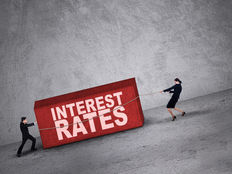
Interest rates have a tremendous impact on bond prices and yields. In general, higher interest rates cause bond prices to fall and yields to rise because investors are incentivized to sell existing bonds paying a low yield in favor of new bonds paying a higher yield. Municipal bonds react in the same way to changes in prevailing interest rates, but they may be less volatile due to their unique tax and credit rating advantages relative to other types of bonds.
In this article, we will take a look at what higher interest rates mean for muni bonds and how investors can protect their portfolios.
Interest Rates 101
Interest rates are perhaps the most influential component of a bond’s valuation. Typically, when new bonds are issued, they have coupon rates near prevailing market interest rates. Investors holding existing bonds with lower yields may sell those bonds and purchase the new higher yielding bonds. These dynamics push down the price and increase yields during periods of rising interest rates and vice versa during periods of falling interest rates.
Let’s look at a couple of concrete examples:
Suppose that an investor purchased a $1,000 bond with a 5% coupon. This means they’re receiving $50 in interest payments per year.
If interest rates rise by 200 basis points, new bonds, at face value, may offer a 7% coupon that translates to $70 per year in interest payments. The investor may decide to sell their bond to purchase the new bond, but they would have to sell it at a discounted price that gives the new owner a yield of 7% or so. The specific price depends on the bond’s attributes, but let’s assume that the sales price is $850. This means that the investor would lose $150 with any interest payments taken out of that loss.
If interest rates fall, new bonds may offer a 3% coupon that translates to just $30 per year in interest payments. The investor could then sell their 5% coupon bond at a premium because it offers a higher interest rate than the rest of the market is paying. Again, the specific price would depend on the bond’s attributes, but let’s suppose that it sells for $1,150. The investor would then gain $150 in capital gains in addition to any interest payments that have been accrued.
Muni Bond Dynamics
Municipal bonds differ from many other types of bonds, which means that interest rates affect them differently. Investors must factor in these key differentiators when determining the impact of interest rates on the muni bond sector.
Some of the biggest differences include:
- Tax Advantages – Muni bond interest payments may be exempt from local, state, and/or federal taxes, which increases the bond’s after-tax yields. The extent of the benefit depends on the investor’s tax bracket.
- Credit Quality – Many muni bonds are issued by local and state governments, which means that they have higher credit quality than many private corporations. The quality depends on a variety of factors, however, including the type of muni bond.
- Supply and Demand – Muni bond issues have been in decline over the past several years, which introduces a unique supply/demand dynamic compared with corporate bonds or U.S. Treasuries that tend to have a steady supply.
Muni bonds tend to outperform other types of bonds during rising interest rate environments because they offer lower yields to begin with. Investors looking to maintain bond exposure despite rising interest rates often turn to these bonds as a hedge. Historically, muni bond yields hover around 85% of taxable equivalents, which creates a buffer as prices start to fall. At the same time, there’s less volatility as about 70% of muni bonds are held by individual investors.
Investors interested in muni bonds may want to consider exchange-traded funds (ETFs) as an alternative to purchasing individual bonds. By using these funds, investors can diversify away any issuer-specific risk factors while still capitalizing on these dynamics. Here’s a list of the top municipal bond ETFs.
The Bottom Line
Higher interest rates tend to hurt bonds and other fixed income investments, but municipal bonds have historically held up better than other types of bonds because of their unique attributes. Investors may want to consider purchasing these bonds or muni bond ETFs during rising interest rate environments to maintain bond exposure without as much potential downside.






